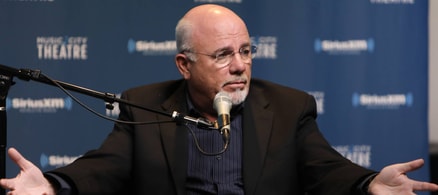To help you create a budget that works for you, we’ve outlined the five most common money personality types – Spender, Saver, Earner, Ostrich, and Sharer – and suggested the ideal budgeting technique for each.
Money personality type #1: The spender
If you’re a big believer in “YOLO” and shopping therapy, you may be a Spender. Other signs are:
- Money burns a hole in your pocket; you spend it as soon as you have it
- Buying stuff makes you feel great
- You put current wants ahead of future needs
- You may continue to spend even if it lands you in debt
- You don’t have much in savings or investments
Objective:
Your spendthrift ways leave you vulnerable for the future, so you need a system that prioritizes long-term savings (and debt repayment, if necessary) and gives you a strict spending limit.
Best personal budget for you: Pay yourself first
Pay yourself first, also known as a reverse budget, is a good option because it takes savings out of your bank account as soon as you’re paid – before you have a chance to spend it.
By scheduling automated transfers to an emergency fund, RRSP, or credit account (if you’re trying to pay off debt), you make savings a top priority. Then you can use the rest of your income for bills and other spending.
Bonus budgeting tip:
You could also consider using an investment app such as Moka, which allows you to set small weekly investents into the best money compounding market, the S&P 500.
Check out the best robo-advisors
Money personality type #2: The saver
If you think a dollar saved is better than a dollar earned, you may be a Saver. You may also:
- Have more than enough set aside to meet both short- and long-term goals, but continue to save beyond that
- Find it painful to part with money
- Avoid paying full price on necessities and reject discretionary spending of any kind
- Need the security of a large nest egg to feel safe
- Don’t like to carry debt; you might even pay off your mortgage early
Objective:
There is such as thing as too much saving. Money is a means to an end, not an end in itself. You need a system that will help you feel secure, but also encourage more spending where appropriate.
Best personal budget for you: 50/30/20 budget
Try the 50/30/20 budget, which divides your net income into three areas: 50% goes toward needs (any fixed expense, such as groceries, housing, transportation, insurance, and other living expenses), 30% goes toward wants (e.g., variable expenses, such as restaurant meals, entertainment, vacations, tech toys, etc.) and 20% is for savings and debt repayment (such as credit card debt, student loan repayment). Clearly, you’ve got that 20% covered. This budget will show you exactly how much more income you could be spending on your needs and wants, so you can hopefully be coaxed into enjoying your money without feeling guilty that you aren’t saving enough.
Bonus budgeting tip:
A cash back app like Avion rewards might also help you feel better about spending, as it automatically rewards you with cash back for eligible purchases.
READ MORE: What is the 50/30/20 budget rule?
Money personality type #3: The earner
If you measure success by income level, you could be an Earner. You may also:
- Get satisfaction from the amount of money you earn, regardless of whether you spend or save it
- Have a plan for career advancement and financial achievement
- Be a workaholic
- Take pleasure in knowing that your income is higher than that of your peers
- Monitor your investment accounts closely because you enjoy watching your assets grow
Objective:
While you know exactly how much money you’ve got coming in, you may not pay much attention to what’s going out. So, you need a comprehensive system that not only shows you where all those hard-earned dollars are going but also ensures you’re devoting enough resources (including time) to non-work pursuits.
Best personal budget for you: The zero-based budget
The zero-based budget is right on the money because it accounts for all your income earnings. Use a budget spreadsheet or a budgeting tool, such as YNAB (You Need A Budget), to log amounts for all your expenses, debt payment, purchases, savings, investments and charitable contributions. Properly done, every dollar of your income will have a designated purpose, without any money left over at the end of the month. You’ll see whether you’re on track for retirement and any other savings goals, and what areas of your life you might be ignoring, say, like vacation spending.
Money personality type #4: The ostrich
If you typically ignore your finances because it stresses you out, you could be an Ostrich. You might also:
- Leave pay stubs and account statements unopened
- Miss payments or go into overdraft/debt because you’re not paying attention
- Disregard prices when shopping
- Think money management is too hard to learn
- Tell yourself you’ll save “eventually”
Objective:
You need a simple strategy that will force you to consider what things cost and if you can afford them.
Best personal budget for you: The envelope budget
Try the envelope budget, which takes a cash-based approach to money management. It’s easy to follow; at the beginning of the month (after your rent/mortgage payment comes out of your account) you withdraw cash and divide it into separate envelopes for various categories such as groceries, gas, entertainment, debt repayment, and savings. When an envelope is empty, that’s it-you can’t spend any more in that category until the next month.
Bonus budgeting tip:
Obviously, you’ll need to put away your credit cards if you want this budget to work. Better yet, use a prepaid card like KOHO, which lets you transfer money onto a Prepaid Mastercard® that you can use for purchases in person or online without any chance of overspending. Spending and transaction insights and budgeting tool are also available with KOHO.
If you want to ramp up your savings slowly, consider doing the 52-week money challenge.
READ MORE: The best prepaid credit cards in Canada
Money personality type #5: The sharer
If you think it’s better to give than to receive-but also put giving ahead of saving and spending on yourself-you’re probably a Sharer. You might also:
- Value others’ financial health above your own
- Offer loans or financial gifts to help friends or family, even if it means you go without
- Rarely shop for yourself
- Put all your extra money and time into helping others, including charities and community groups
- Have little in savings, because you give so much away
Objective:
You need to take care of yourself if you hope to be there for others in the future. That means putting away enough for retirement savings and emergencies first; then you can give to your heart’s content.
Best personal budget for you: The values-based budget
The values-based budget is perfect for anyone who finds joy through a specific use of money – whether that be travel, a hobby, or helping others. It’s similar to the pay-yourself-first strategy, in that you start by making sure you’re putting enough away in an emergency fund and retirement savings and you’ve got your living expenses covered.
Then look at what’s left over, how you’re spending it, and whether that makes you happy. Any costs that “don’t matter” to you should instead be used to pay for what you value. A budgeting app such as PocketSmith can help you see the big picture, including forecasting cash flow up to 30 years in the future, so you can be sure you aren’t giving away more than you can afford.
The bottom line
The above budgets aren’t mutually exclusive. Feel free to mix and match as appropriate! After all, you may find that you are a hybrid model of the above money personalities: a “Saver-Earner,” for example, may want to use the 50-30-20 budget as well as a budgeting app to keep them on track. Whatever works for you!
Read more: Best budgeting apps and tools on the market





